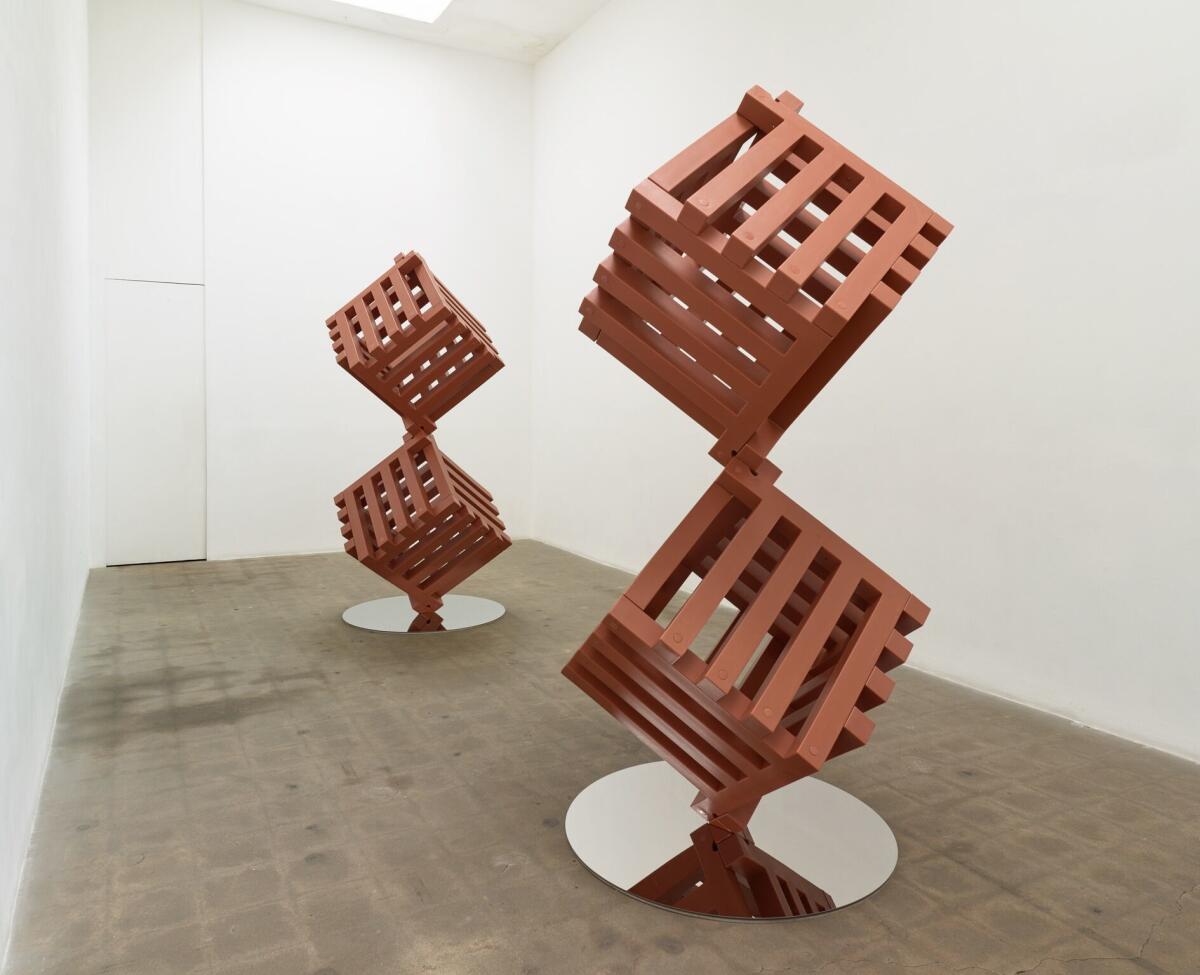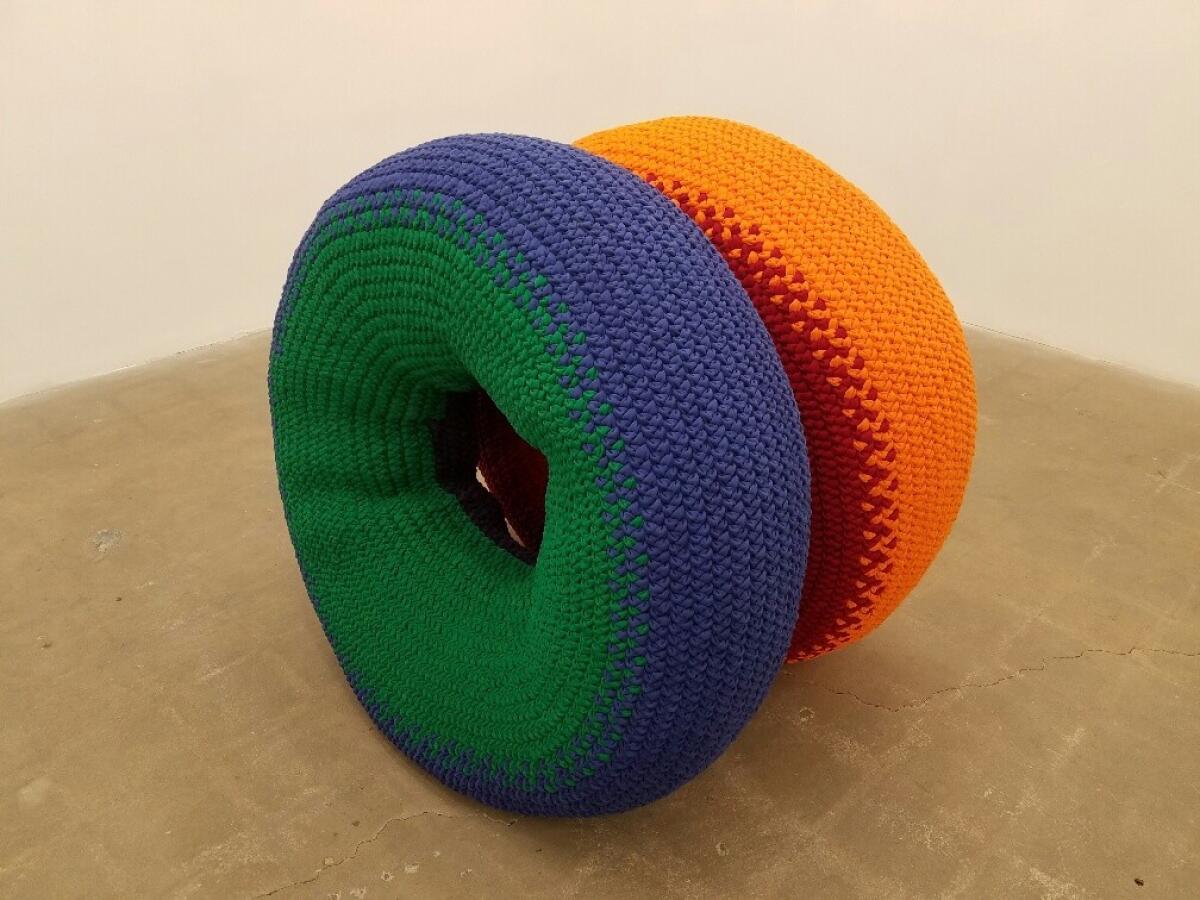Review: At Richard Telles Fine Art, Jim Isermann’s illusions stack up
- Share via
New sculptures by Jim Isermann look like the crates that the sculptures might have been shipped in, albeit here given free rein to perform like circus acrobats.
The offbeat mix is typical for the artist, whose distinctive fusion of high art, handicraft and commercial design has fueled an exceptional body of work over three decades. At Richard Telles Fine Art, “Untitled (Stacked Cubes)” introduces something new.
Two 42-inch cubes are constructed from polyethylene, the most common, indeed quintessential industrial plastic of the late 20th century. The two cubes balance on point, one atop the other, standing on a flat mirrored circle.
Each cube is assembled from modular parts — six planes bolted together, each one a series of four protruding bars, like extended fingers. Their waxen plastic color is somewhere between weathered Cor-Ten steel, archetypal for industrial sculpture, and smooth milk chocolate.
Minimalism meets a Mars candy bar.

Indeed, forget materials with ancient legacies like clay, marble, wood or varieties of metal. These plastic forms, like those in children’s playground equipment and durable toys, are produced by a 1960s process called rotational molding: Resins are entered into a heated mold that rotates slowly on the vertical and the horizontal.
The resulting product’s seamless walls have a uniform thickness, but the corners gather more polyethylene. That makes them stronger.
In true Modernist manner, Isermann calls on these structural properties to determine the sculptural form — cubes dynamically stacked on their corners, rather than on the flat surfaces, where the ability to absorb stresses and strains is the greatest. The intricate joinery is heightened through exposed bolts, as well as bolts hidden behind visible plastic plugs.
Isermann’s sculptures always look supremely simple, until you begin to examine what they’re up to. “Untitled (Stacked Cubes)” is sort of like Brancusi’s “Endless Column” as if it were conceived by Donald Judd or Sol LeWitt. That he shows two of them side by side, not to mention on reflective mirrored bases, only enhances the industrial sense of endless reproduction.

To see one historical antecedent for this new work, check out the gallery’s auxiliary space. From 1996, Isermann’s “Untitled (Donuts)” is a chest-high pair of soft, rainbow-colored rings made from cotton strips braided over a tough armature of truck tires. Like a tea-cozy for a Ford F-150, it will make you wonder about the relative merits of better living through industry versus art.
Richard Telles Fine Art, 7380 Beverly Blvd., L.A. Through March 25; closed Sundays and Mondays. (323) 965-5578, www.tellesfineart.com
Twitter: @KnightLAT
ALSO
In the face of fascism, he showed industrial-strength optimism: The art of Moholy-Nagy at LACMA
The biggest entertainment stories
Get our big stories about Hollywood, film, television, music, arts, culture and more right in your inbox as soon as they publish.
You may occasionally receive promotional content from the Los Angeles Times.








